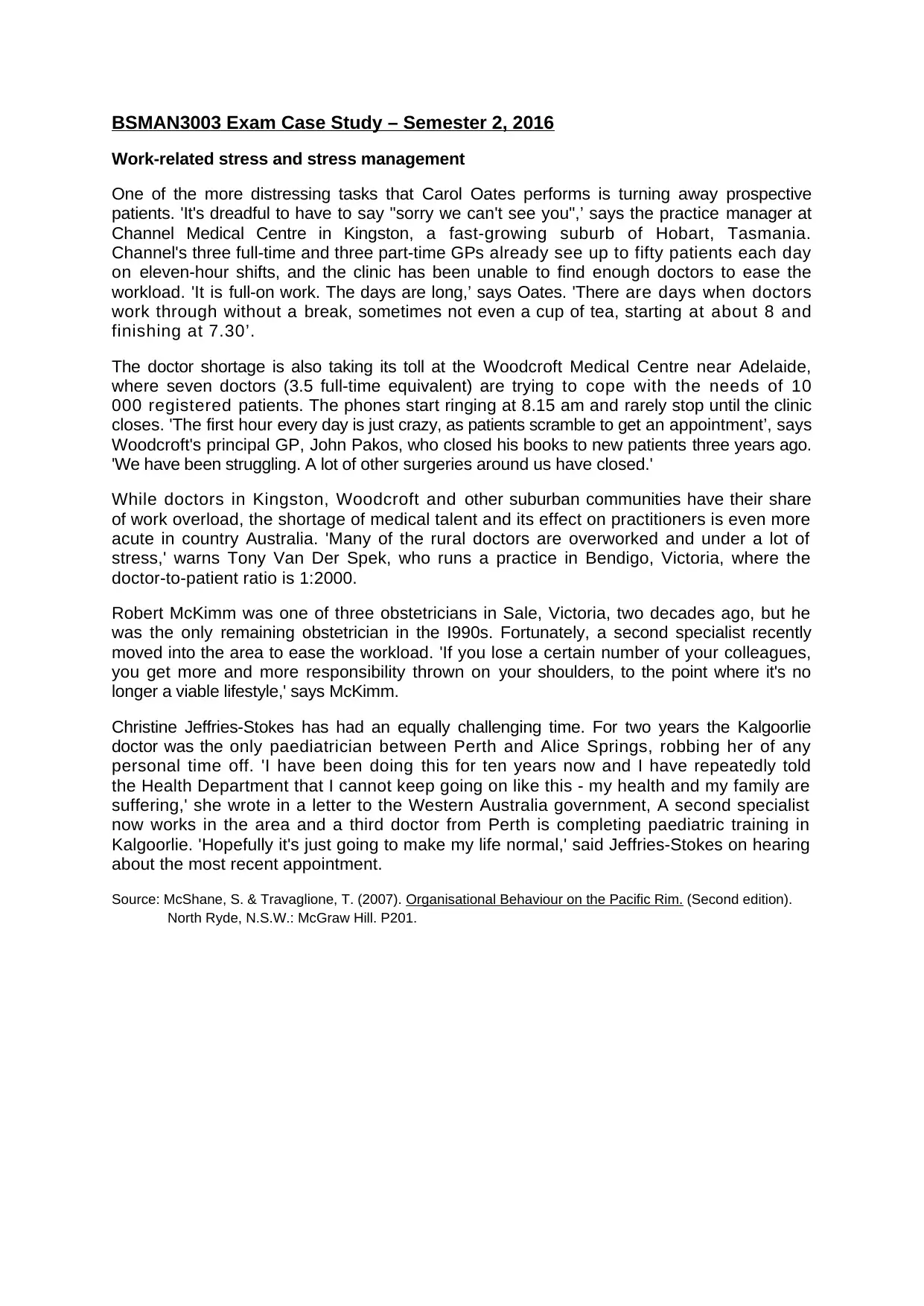BSMAN3003 Case Study: Analyzing Work-related Stress and Management
VerifiedAdded on 2019/09/23
|1
|561
|250
Case Study
AI Summary
This case study, sourced from McShane & Travaglione's 'Organisational Behaviour on the Pacific Rim,' examines the pervasive issue of work-related stress within the healthcare sector, specifically focusing on the experiences of doctors and medical practices. The case highlights the pressures faced by doctors in Australia, including long hours, heavy patient loads, and staff shortages, leading to burnout and impacting their personal lives. It presents scenarios from various locations, such as Kingston, Woodcroft, and rural areas, illustrating the diverse challenges. The case underscores the importance of addressing stress through various management strategies and the detrimental effects of insufficient resources and support. The examples of doctors like Robert McKimm and Christine Jeffries-Stokes provide insights into the impact of workload on health and well-being, emphasizing the need for solutions to ensure sustainable practices and quality patient care. The case study serves as a valuable resource for understanding and addressing the challenges of stress in the healthcare industry, emphasizing the need for effective management practices and policies.

![[object Object]](/_next/static/media/star-bottom.7253800d.svg)